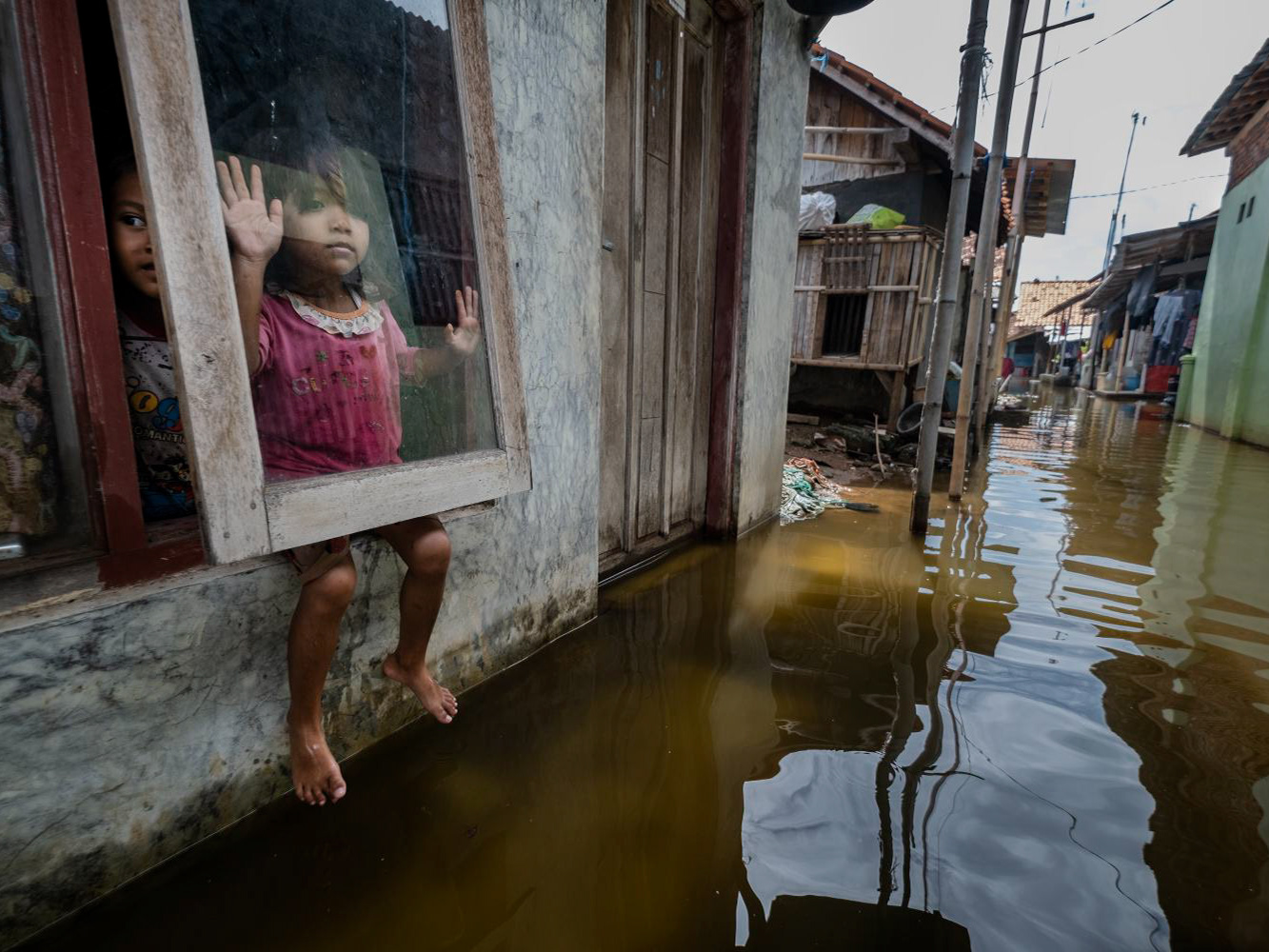
Sinking Hopes
(click on the picture to see more images and then click miniatures to enlarge the photos). With over 80,000 kilometers of coastline, the more than 17000 islands that make up the archipelago of Indonesia are under imminent threat from rising sea levels. Experts predict that by 2050, thousands of the country's islands and nearly 1/3 of Java, where the capital Jakarta stands today will be under water.
Flooding from tidal waves, tsunamis and coastal erosion severely impact the environment, and dramatically affect the local economy destroying property, livelihoods and displacing entire communities.
The government is racing to reduce greenhouse emissions, by restricting habitat depletion and restoring peatlands and mangroves. Programs to fight poverty and help local communities thrive are also being implemented.
This situation reflects the global challenges of climate change on the environment, economy and political stability. The cover picture has won an Award of Excellence in Daily Life at POYI 82 in 2025
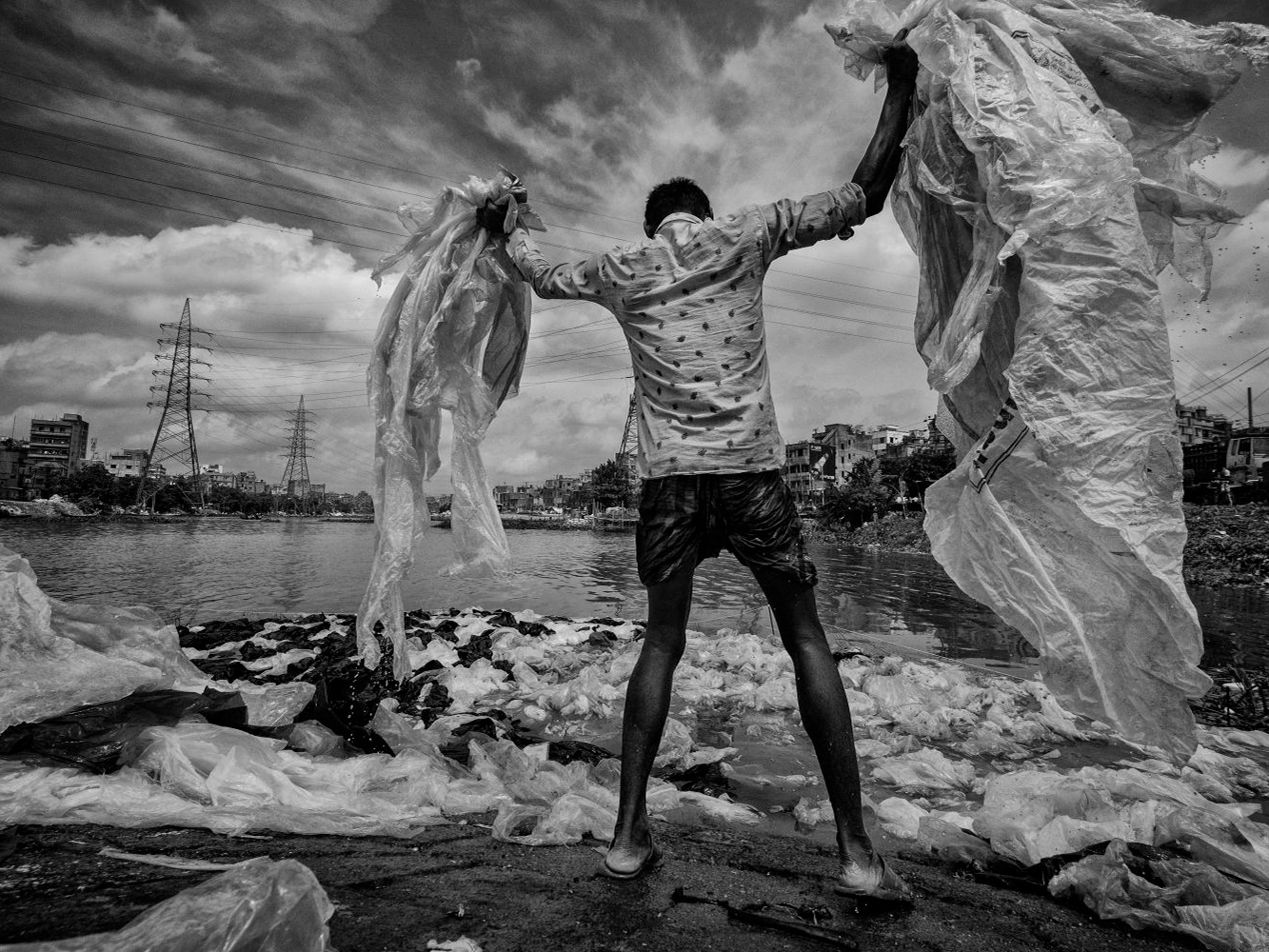
Plastic Treasure
(click on the picture to see more images and then click miniatures to enlarge the photos) Recycling plastic in Dhaka is a significant environmental effort. Locals play a crucial role in collecting, separating, and selling plastic to recycling facilities, contributing to reducing plastic pollution and generating income. NGOs promote plastic recycling awareness and education, encouraging proper disposal. The government has taken steps, like banning single-use plastic bags. Challenges remain, including the need for better waste management infrastructure and a formalized recycling industry, but Dhaka's commitment to addressing plastic waste's environmental impact is evident. The series has won an Award of Excellence in Daily Life stories at POYI 81 in 2024
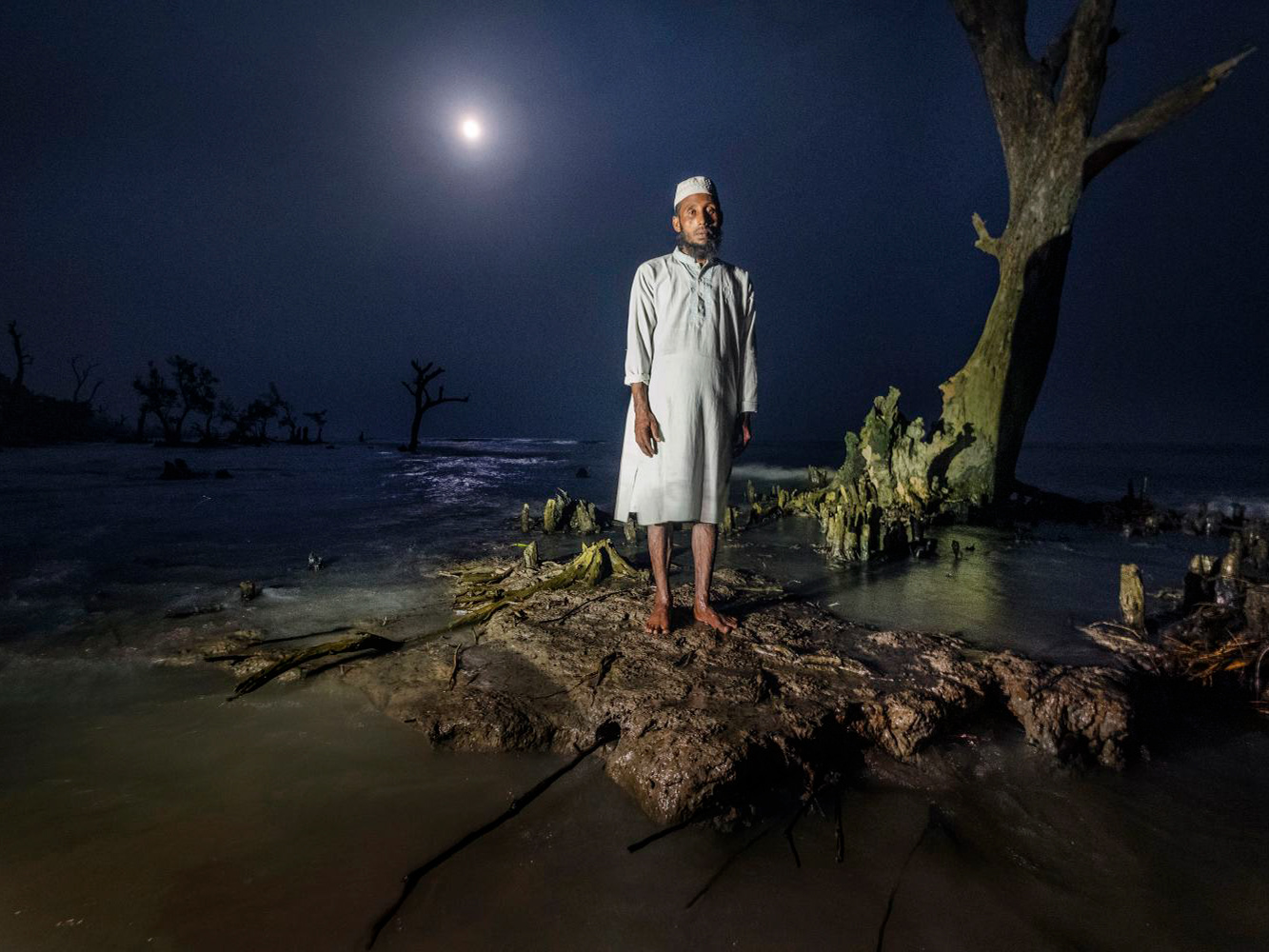
Climate Injustice
(click on the picture to see more images and then click miniatures to enlarge the photos) Bangladesh faces devastating consequences of climate change including, frequent droughts, floods, cyclones, and rising sea levels, resulting in property damage, and human casualties. Unemployment, poverty, and internal migration to crowded urban areas, particularly Dhaka, is rising. Situated just above sea level, the country could lose 15-20% of its land mass by 2050, displacing 25-30 million people and sparking regional conflicts. Western nations, leading greenhouse gas emitters, should adopt a global approach to climate justice and provide financial and technological aid to Bangladesh. The series has won a Finalist place in Portrait Series at POYI 81 in 2024
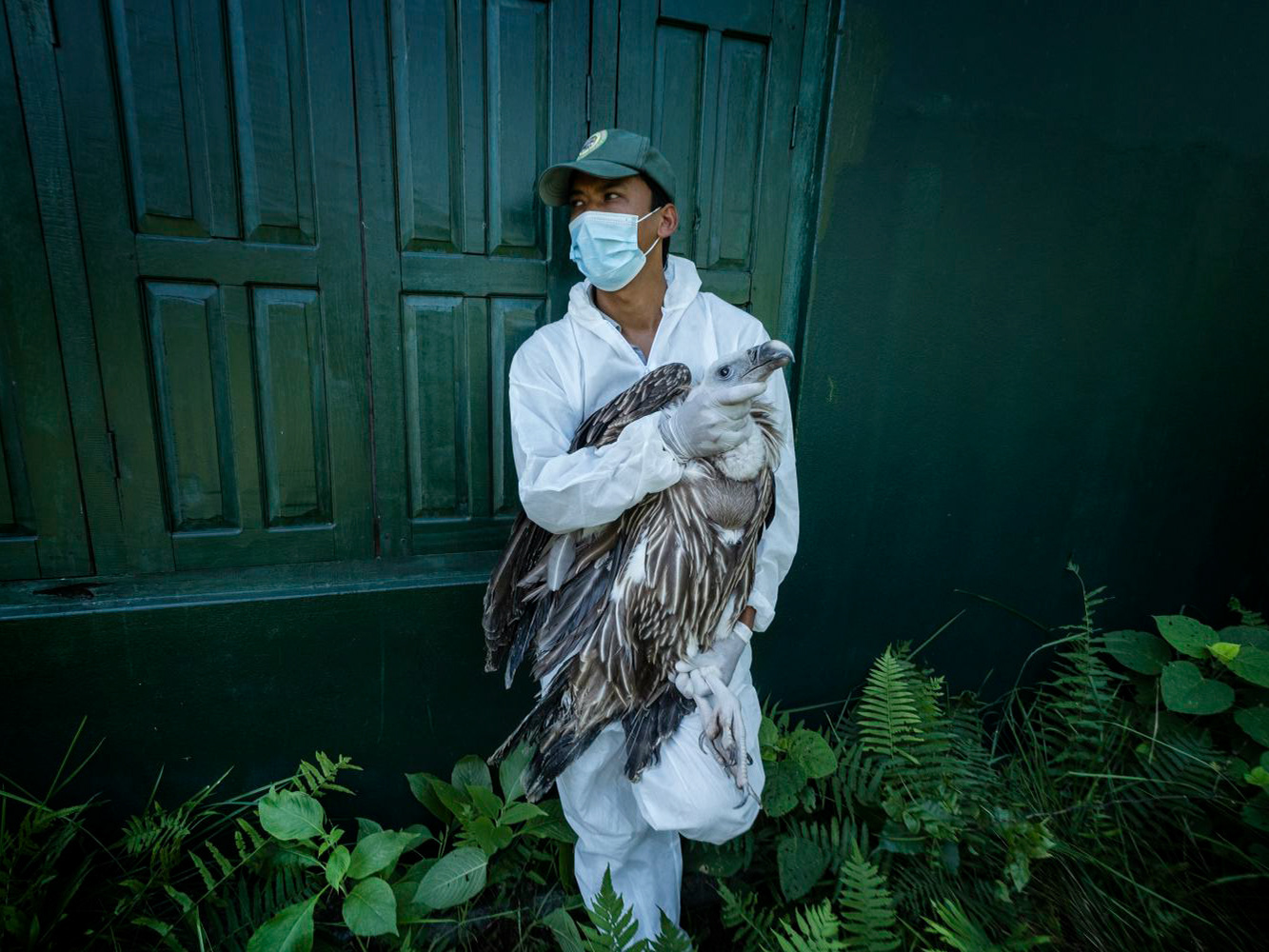
Vulture Restaurant
(click on the picture to see more images and then click miniatures to enlarge the photos) Vultures control biological waste by devouring carcasses at lightning speed, neutralizing pathogens, and preventing diseases from spreading. Their waste management services are free and eco-friendly.
Over 1 million vultures were nearly wiped out in Nepal by Diclofenac, an NSAID used to treat livestock in the 1990s.The drug was banned in 2006.
Jatayu Restaurant was the first community-run safe feeding zone for vultures in the world.
Following a successful breeding program, the population is rebounding with captive and wild vultures pairing. The project, replicated in Nepal and elsewhere, is a boon to the local economy, and promotes conservation and eco-tourism. But vultures still face many hazards including, accidental poisoning, electrocution, deforestation, and food scarcity. The series has won 1st Place in Science and Natural History single at POYI 81 in 2024
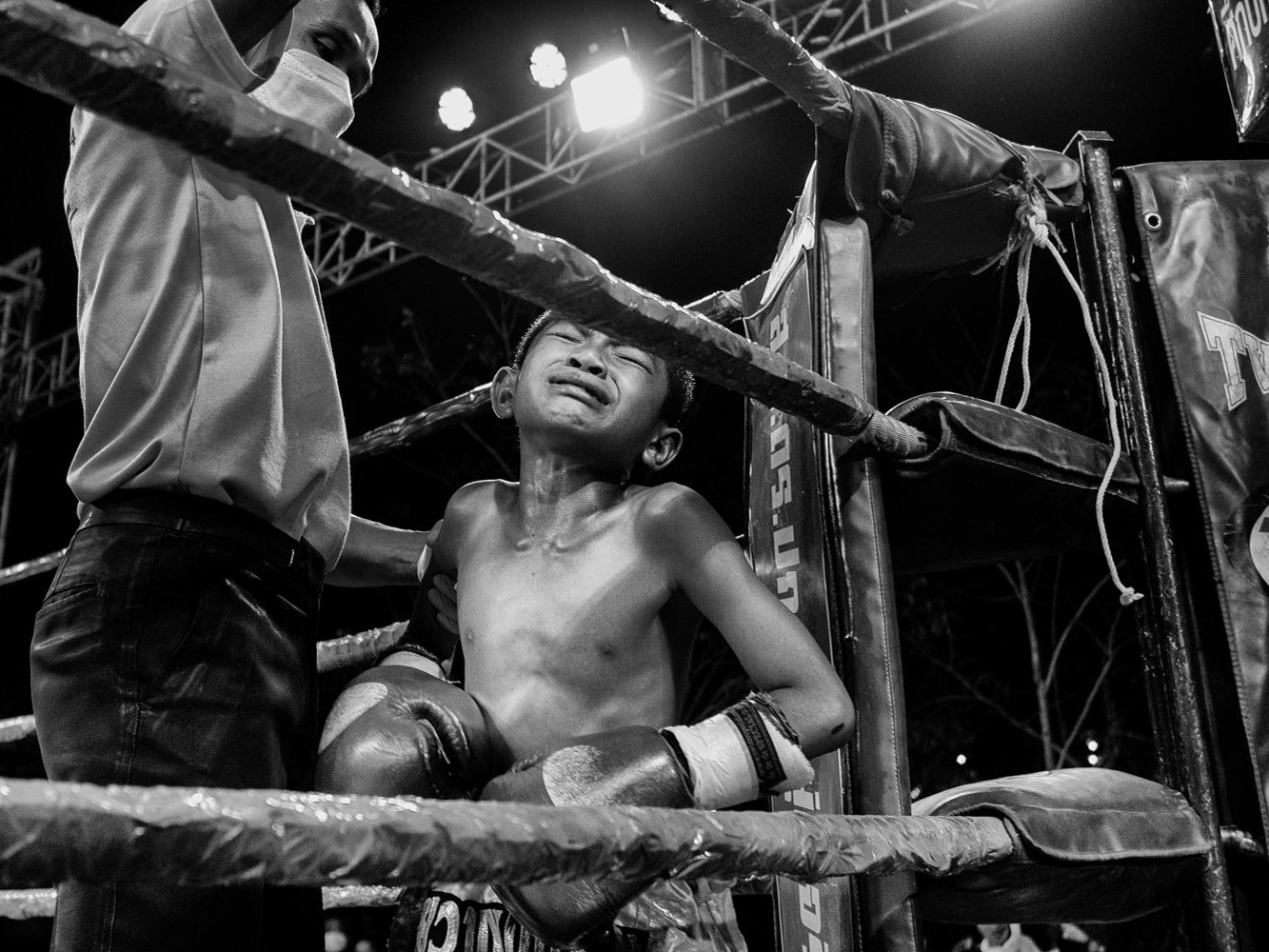
Muay Thai Kids
(click on the picture to see more images and then click miniatures to enlarge the photos) In Isaan, kids are enrolled in Muay Thai (the martial art that is the country’s national sport) as early as 5, and can be competing by 6-7 years old. Betting is fierce and the pressure on the children is palpable. For poor kids, Muay Thai is a way to meet the cultural expectation of helping their families and a chance at a better life. The series has won
1st Place @ URBAN Photo Awards in Trieste Photo Days, 1st Place at Lugano Photo Days, 1st Place at Best of Photojournalism 2022 by NPPA, 3rd Prize at Istanbul Photo Awards, Finalist @ 79th POYI in the category Sports Picture Story and finalist in Sports Life, Honorable Mention @ Siena 2022, 1st Place at Felix Schoeller in Photojournalism category, 2023, and published in National Geographic Holland Belgium in January 2023
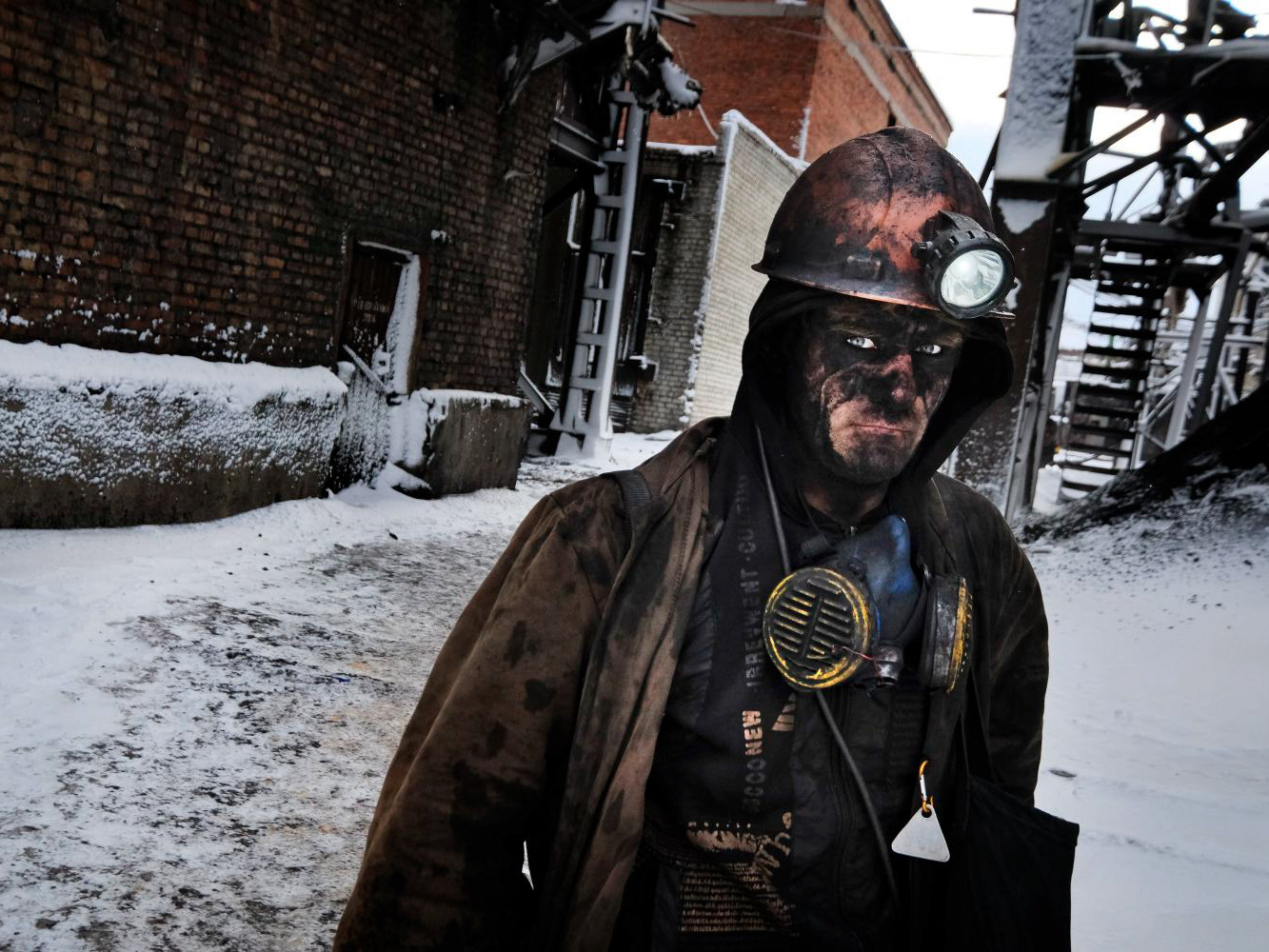
Coal Survivors
(click on the picture to see more images and then click miniatures to enlarge the photos) The mines in Toretsk (Ukraine) have closed one by one since the 1990s. Since the start of the Donbas conflict in 2014, people have left because the frontline is only 10 kms away. As of mid-February 2020, miners of Centralna Mine had not been paid for four months and rumors of closure are rife.
The series has been published in National Geographic Holland-Belgium issue in March 2021
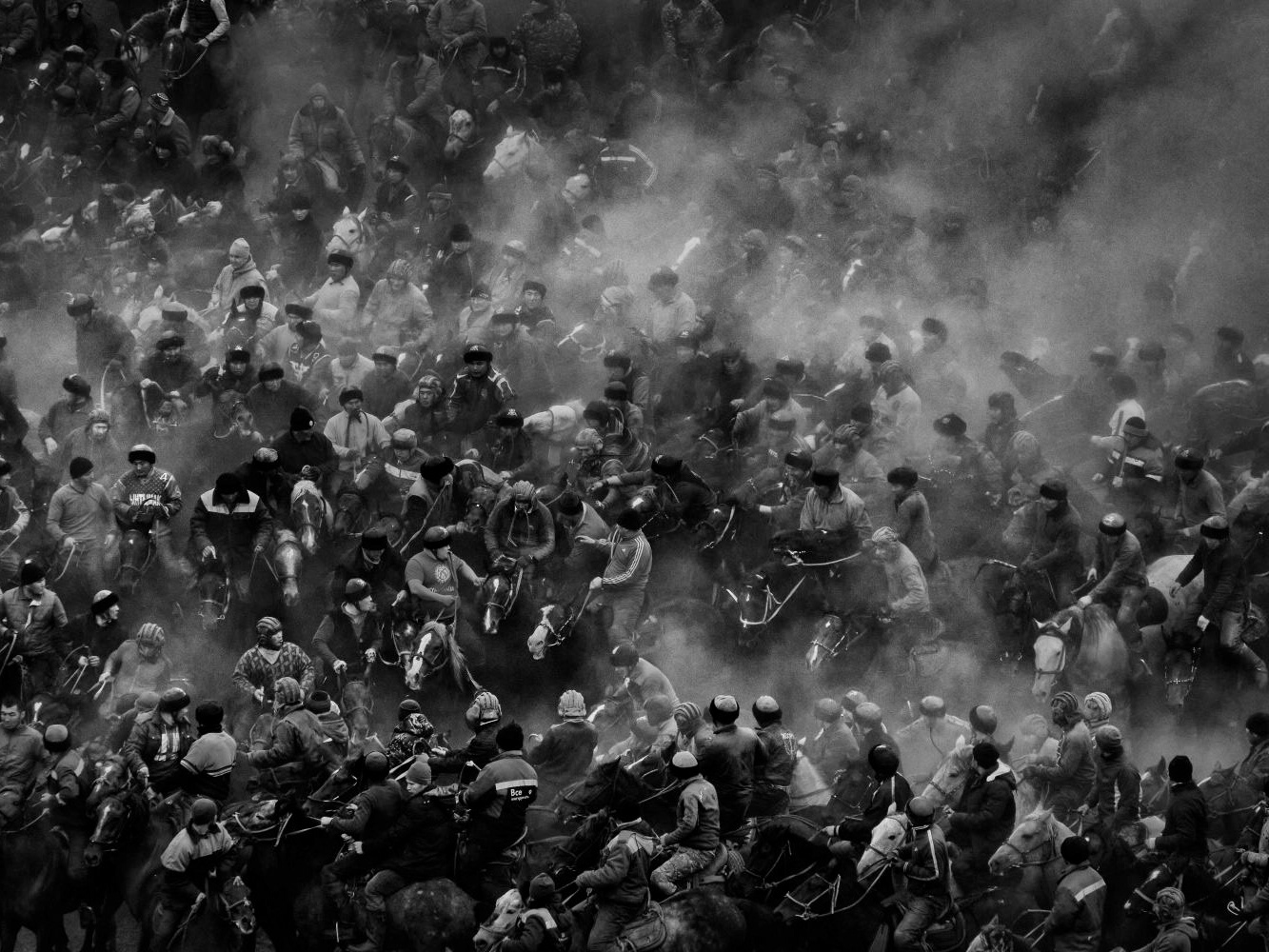
Dead Goat Polo
(click on the picture to see more images and then click miniatures to enlarge the photos) Kok Boru is the national sport of Kyrgyzstan. Dead Goat Polo as some refer to it looks more like cavalier rugby with a headless goat as a ball. Two teams of five fearless men on horseback try to score a point by heaving the 20-kilo body into the tai kazan (goal) at either end.
The series has received an Award of Excellence at POYI and 1st place in Sports Story at Istanbul Awards
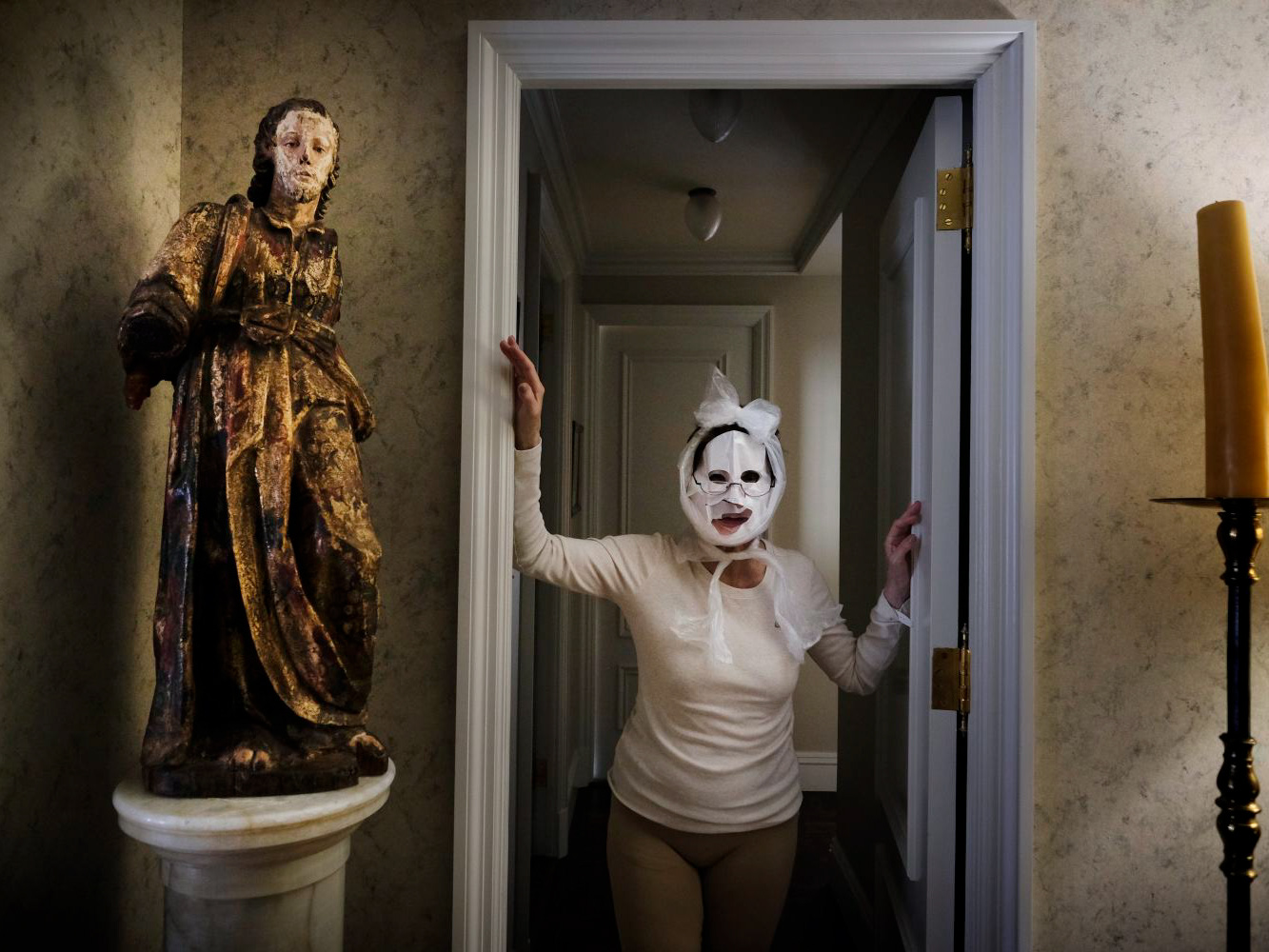
Upper East Side Story
(click on the picture to see more images and then click miniatures to enlarge the photos) White glove-buildings, designer boutiques, Museum Mile and ladies who lunch are some of the images associated with Manhattan’s Upper East Side (UES). This series depicts a microcosm of life on the Upper East Side in New York City widely considered New York City’s most affluent neighborhood.
Published in National Geographic Holland/Belgium edition. The series has won Best Author at Trieste PhotoDays, Finalist at Siena,
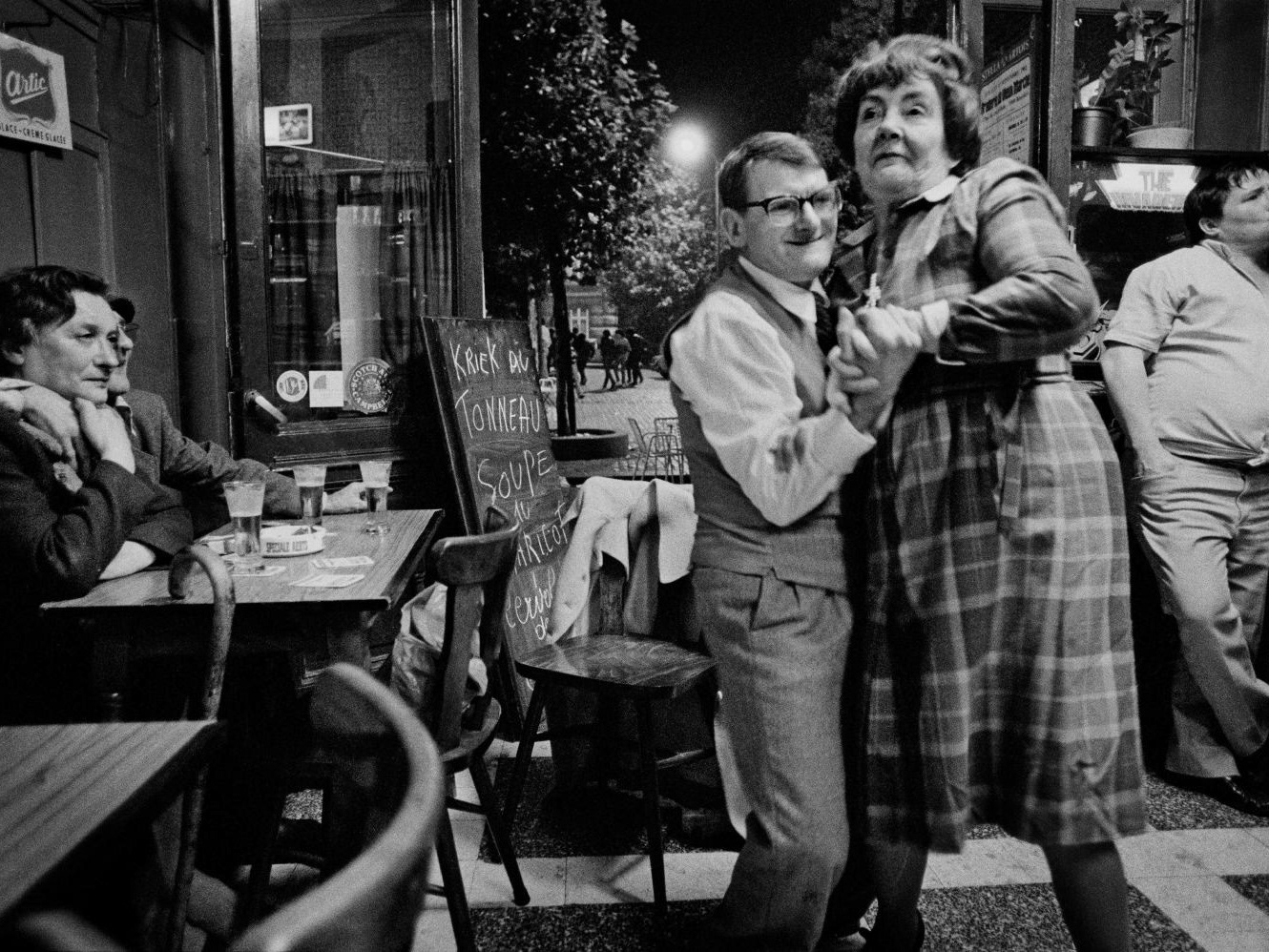
Brussels Cafe
(click on the picture to see more images and then click miniatures to enlarge the photos)
The 3 Portes café was located in the neighborhood of Les Marolles on the Place du Jeu de Balle (200m from where I live) in Brussels. It was an everyday meeting place for local people that unfortunately no longer exists. There were a few typical cafés like this around the square where people gathered to socialize, drink, dance and flirt. The series has won Finalist at LensCulture, Exhibition at Headon Australia, Shortlist at Festival Della Fotografia Etica in Lodi,
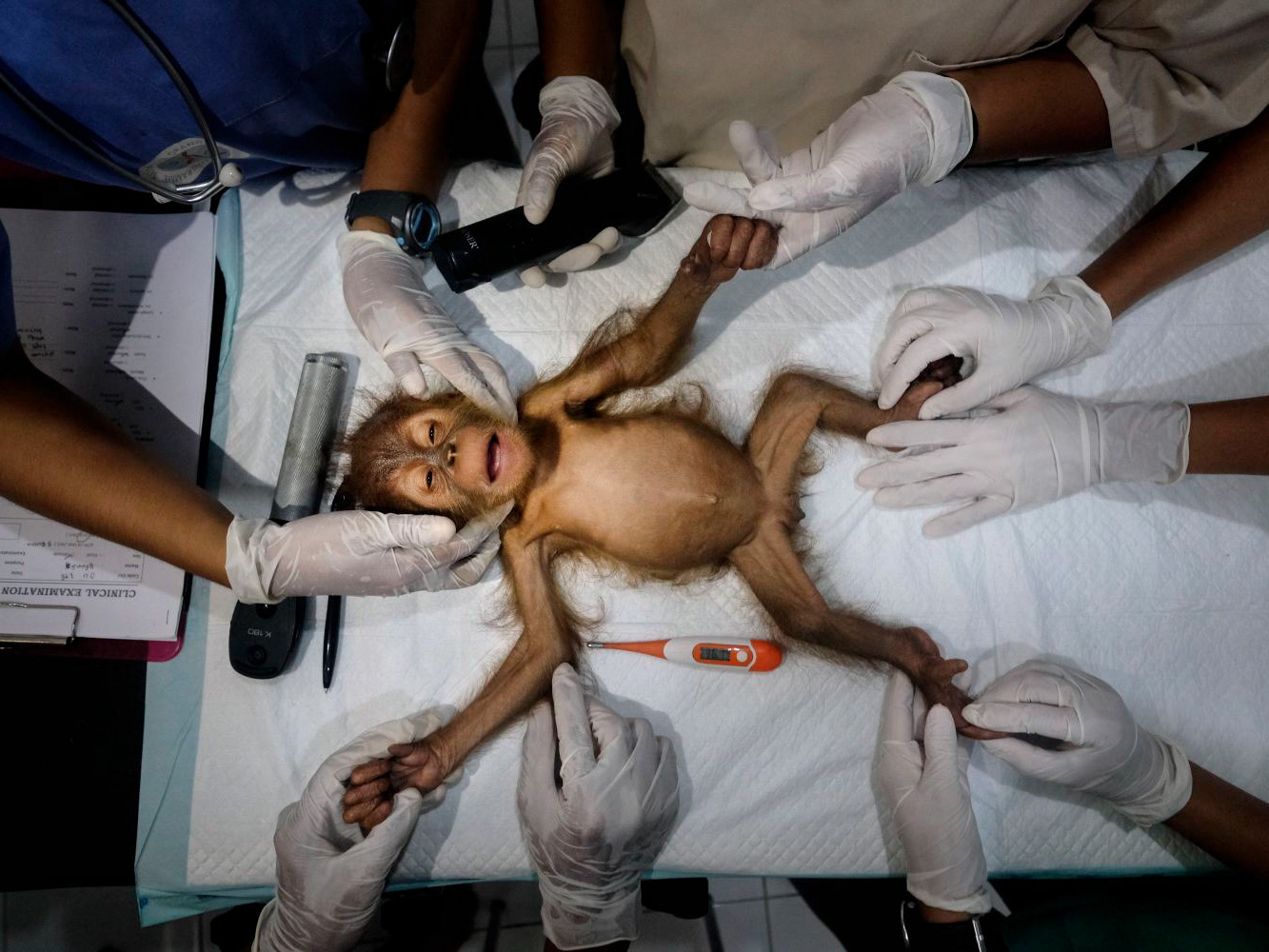
Saving Orangutans
(click on the picture to see more images and then click miniatures to enlarge the photos) Indonesia’s Sumatran orangutan is under severe threat from the incessant and ongoing depletion and fragmentation of the rainforest. As palm oil and rubber plantations, logging, road construction, mining, hunting continue to proliferate, orangutans are being forced out of their natural rainforest habitat. Some organizations rescue orangutans in difficulty (lost, injured, captive...) while others like the SOCP (Sumatran Orangutan Conservation Programme) cares for, rehabilitates and resocializes orangutans at their purpose-built medical facility. These pictures shows them in their daily life in the clinic and quarantine center while saving orangutans lives with the final goal to reintroduce them into the wild and to create genetically viable populations in protected forests. .
Published in National Geographic Holland/Belgium edition.
The series has been awarded two 1st Prize World Press Photo in 2020 in Nature Stories category and in Nature Single category, and 1st Prize single at POYI in Science and Natural History category.
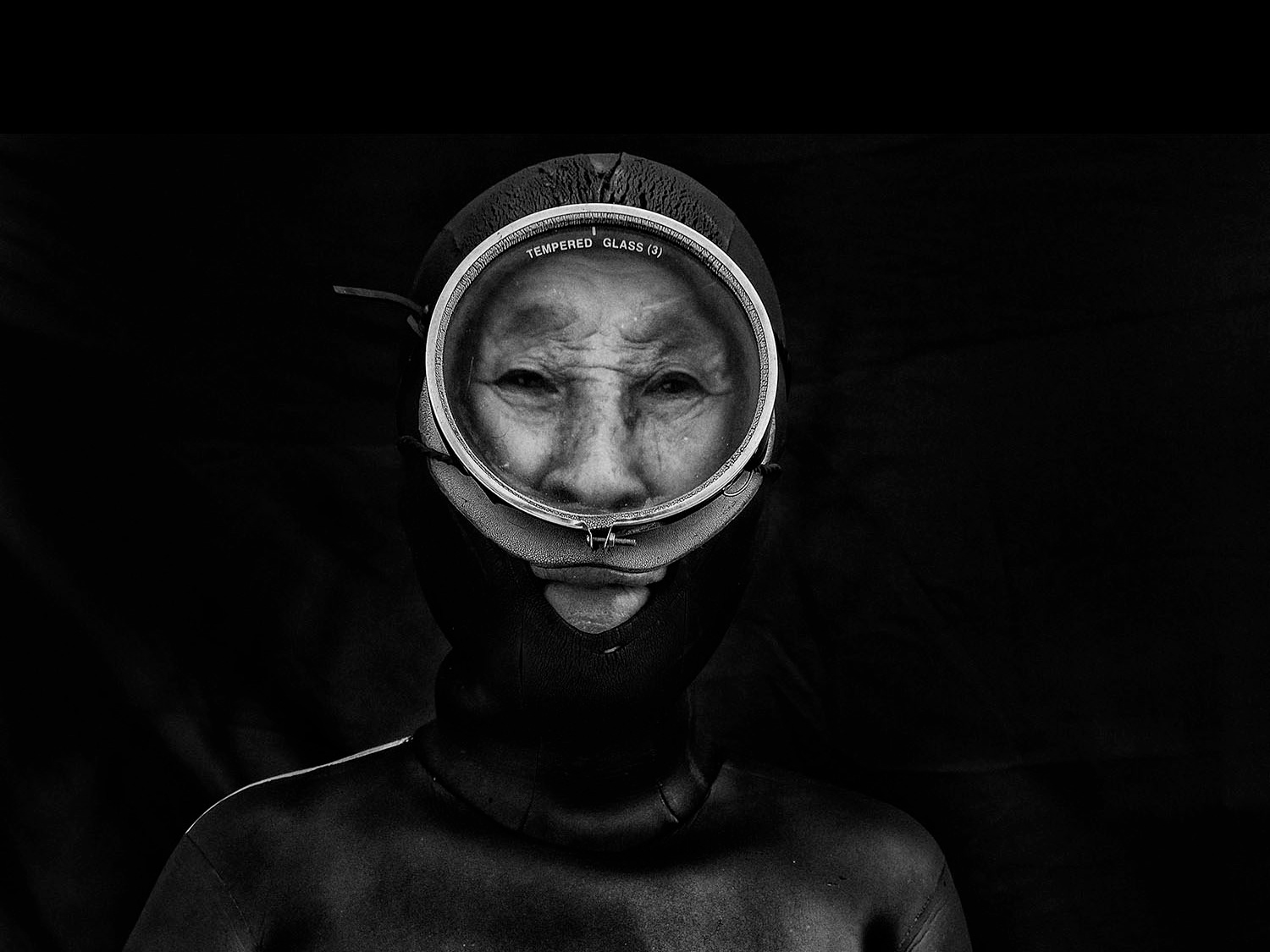
Grandma Divers
(click on the picture to see more images and then click miniatures to enlarge the photos) Jeju island, known for its basalt volcanic rock, sits off South Korea. It is the home of the Haenyeo or women of the sea who free dive off the black shores of Jeju harvesting delicacies from the sea. Wearing thin rubber suits and old fashioned goggles, this aging group of women (50 and many are well over 70) are celebrated as a national treasure and inscribed on the UNESCO list of Intangible Cultural Heritage, but the tradition is slowly fading as fewer women choose this hazardous profession.
The series has won 3nd Place Siena + exhibition in Siena, Photo Annual USA 1st Place, Paris PX3 State of the World 1st Place, British Journal of Photography (BJP) 1st Place, Smithsonian finalist, LensCulture finalist, Pollux Award and IPA 1st Place,
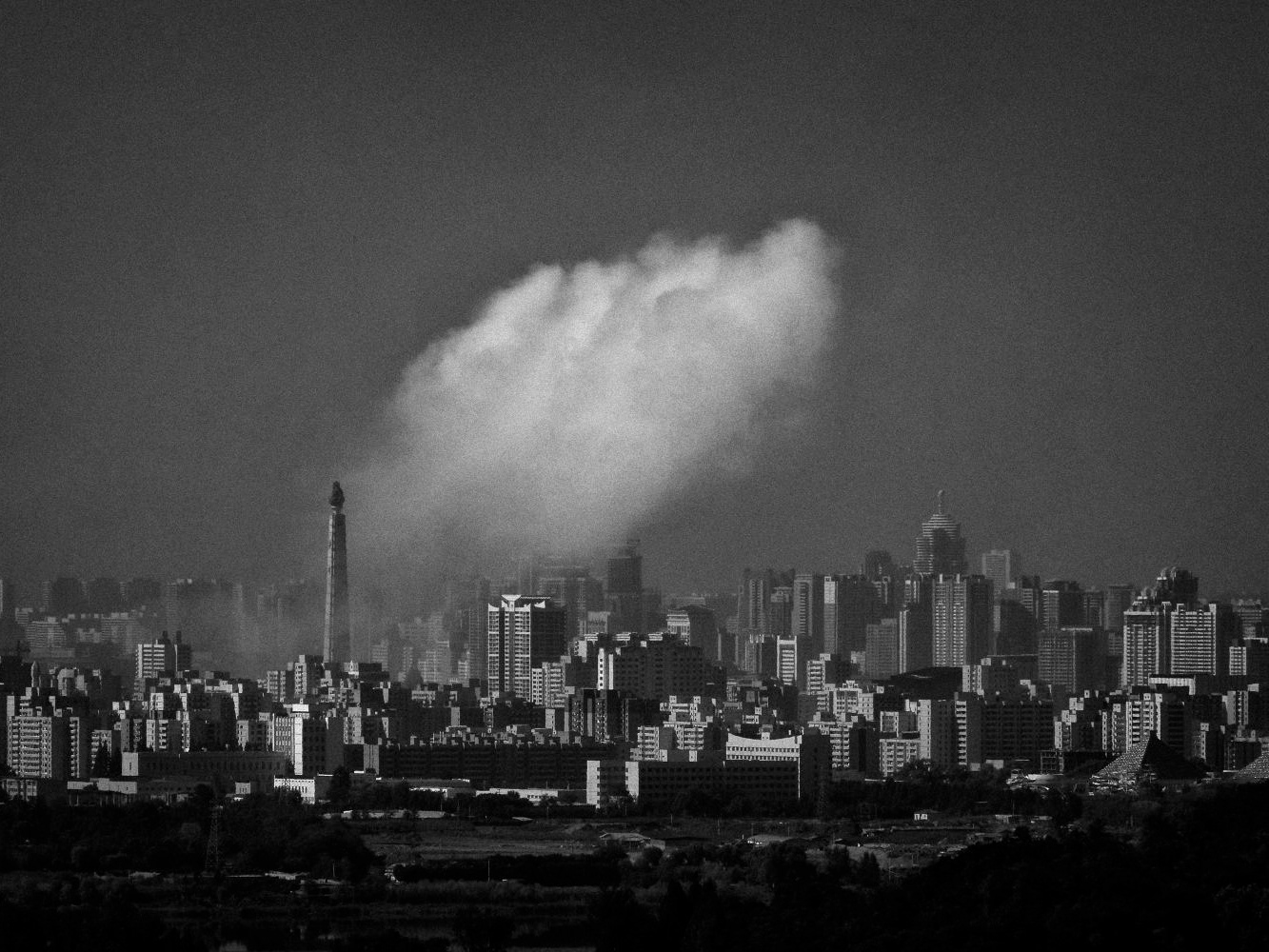
Kim City
(click on the picture to see more images and then click miniatures to enlarge the photos) The Democratic People's Republic of Korea (DPRK) is one of the most isolated and secretive nations ruled by the Supreme Leader Kim Jong-un. It is a society based on an extreme cult of personality and a lot of propaganda.
September 9, 2018, was the 70th anniversary of the creation of DPRK.
Surveilled by two official government guides at all times you are told what to do, what to look at or not and what to photograph and there is no choice but to follow the rules.
So remember when you look at the images, as Magritte, the Belgian surrealist painter, said:
This is not North Korea.
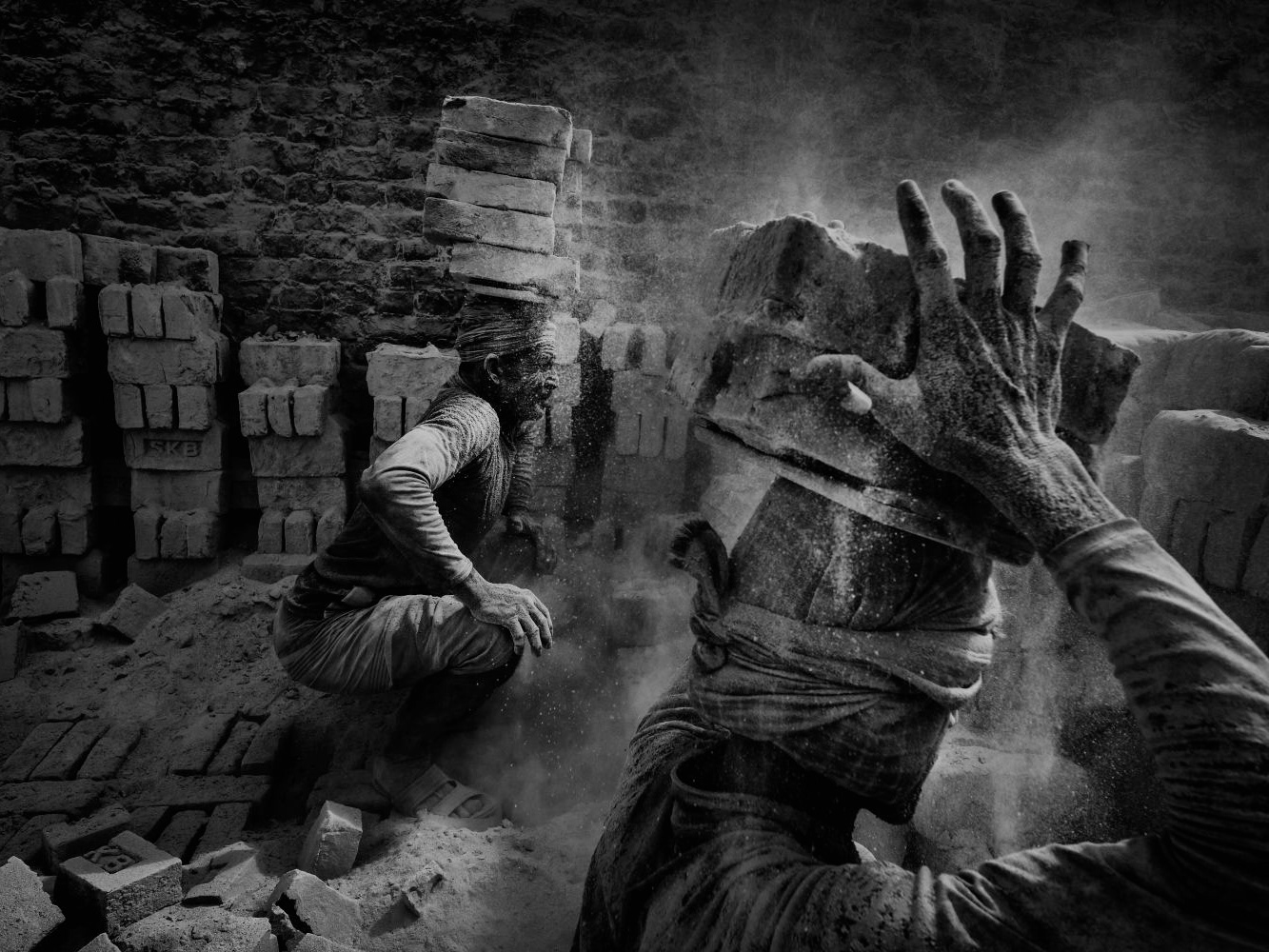
Brick Prison
(click on the picture to see more images and then click miniatures to enlarge the photos) In Bangladesh, the brick industry employs men, women (sometimes pregnant) and children to work in brickyards in harsh and dangerous conditions. Wearing no protective gear, they work 12-18 hours breathing air filled with toxic particles to produce bricks. Children aged only 5-6 years, are working like slaves for $1 a day. Children who do not have access to education have little choice but to enter the labor market where they are often exploited and unable to escape the cycle of poverty. The series has won 3rd Place at Days Japan, 1st Place Project & Portfolio at Trieste Photo Days,

Taekwondo North Korea Style
(click on the picture to see more images and then click miniatures to enlarge the photos) Pyongyang, North Korea. Influenced by a combination of historical events in Korea and Japanese traditions, the modern incarnation of Korea’s national martial art Taekwondo ("way of kick and fist") was created in 1955 by General Choi Hong-hi, born in what is now North Korea. Taekwondo is extremely popular in North Korea. It is taught in every school and is part of the daily sports and health routine of all DPRK citizens. After 50 years of existence, the art of kicks has 60 million practitioners in more than 120 countries and Taekwondo became a medal sport at the Sydney 2000 Olympic Games. The series has won Best Author at Trieste PhotoDays, 3rd Place Istanbul Awards, Finalist TPOTY (The Photographer of The Year)
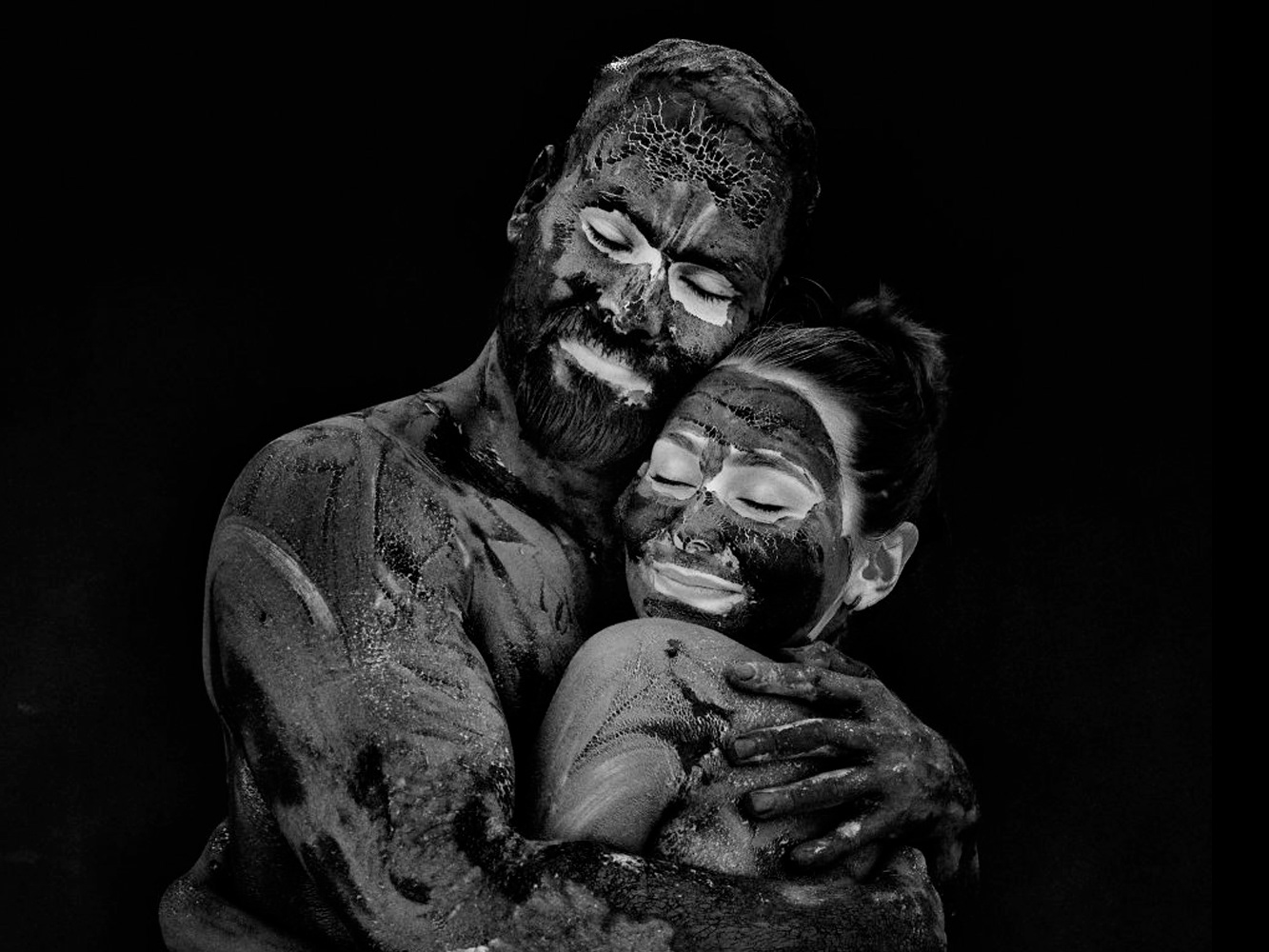
Miracle Mud
(click on the picture to see more images and then click miniatures to enlarge the photos) Techirghiol, is a small Romanian town on the Black Sea famous for its therapeutic mud. The thick black mud (highly-concentrated sediment rich in organic matter) found at the bottom of the lake is particularly effective in the treatment of arthritis, musculoskeletal disorders, skin ailments and detoxification, and beneficial for overall well-being. Residents of the region have been coming here their whole lives.
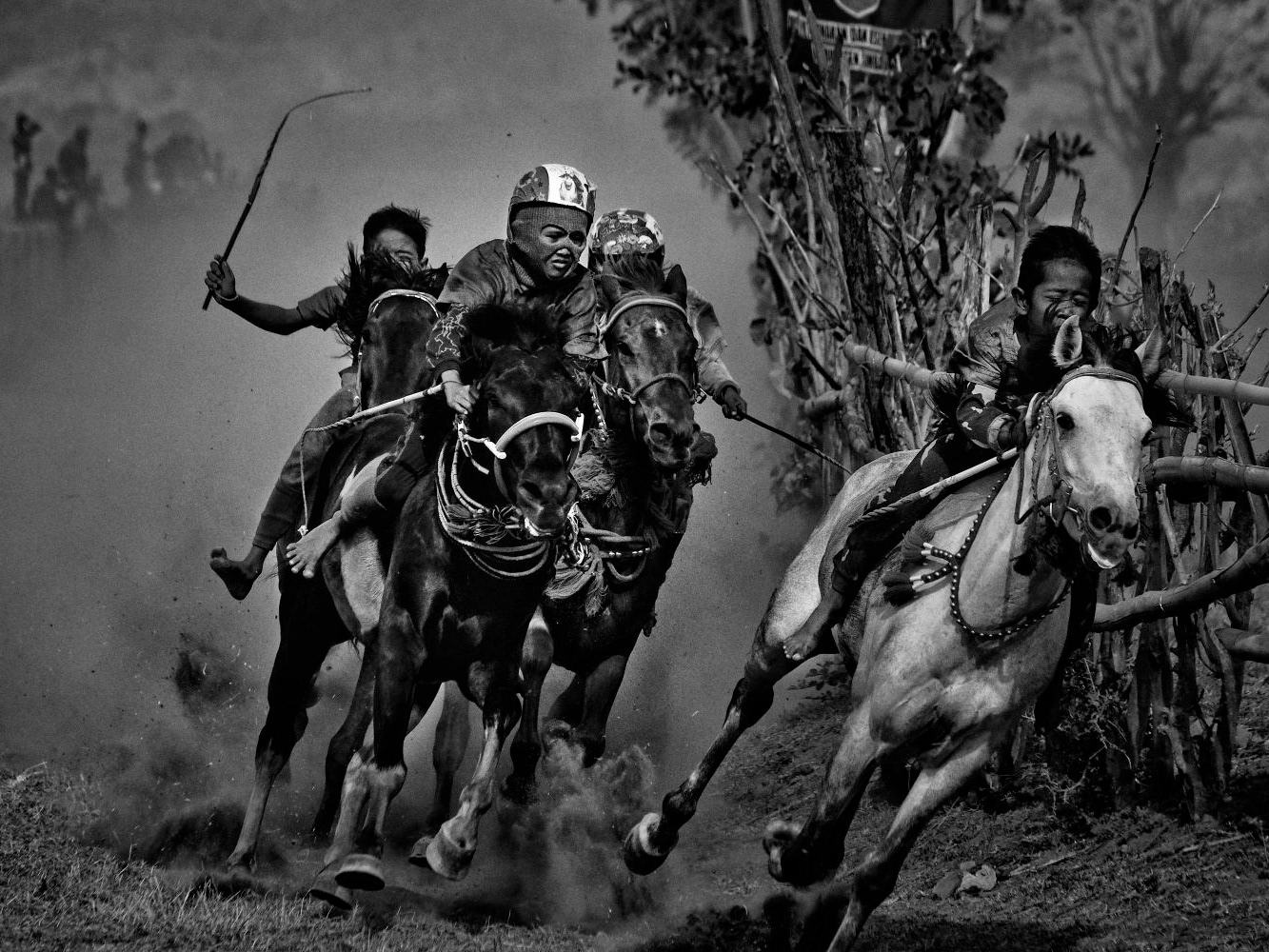
Kid Jockeys
(click on the picture to see more images and then click miniatures to enlarge the photos) Indonesia, Sumbawa Island. Once a game between neighbors to celebrate a good harvest, horse racing in Sumbawa was transformed into a spectator sport by the Dutch in the 20th century to entertain officials and nobility. The unique features of Sumbawa racing, are the notoriously small horses and the fearless child jockeys, aged 5-10, who mount bareback, barefoot and with little protective gear. Today, Maen Jaran takes place during every important festival and holiday throughout the year at racetracks across the island and remains a favorite pastime Sumbawans.
The series has been awarded 1st prize at World Press Photo 2018 in the Sports Stories category.
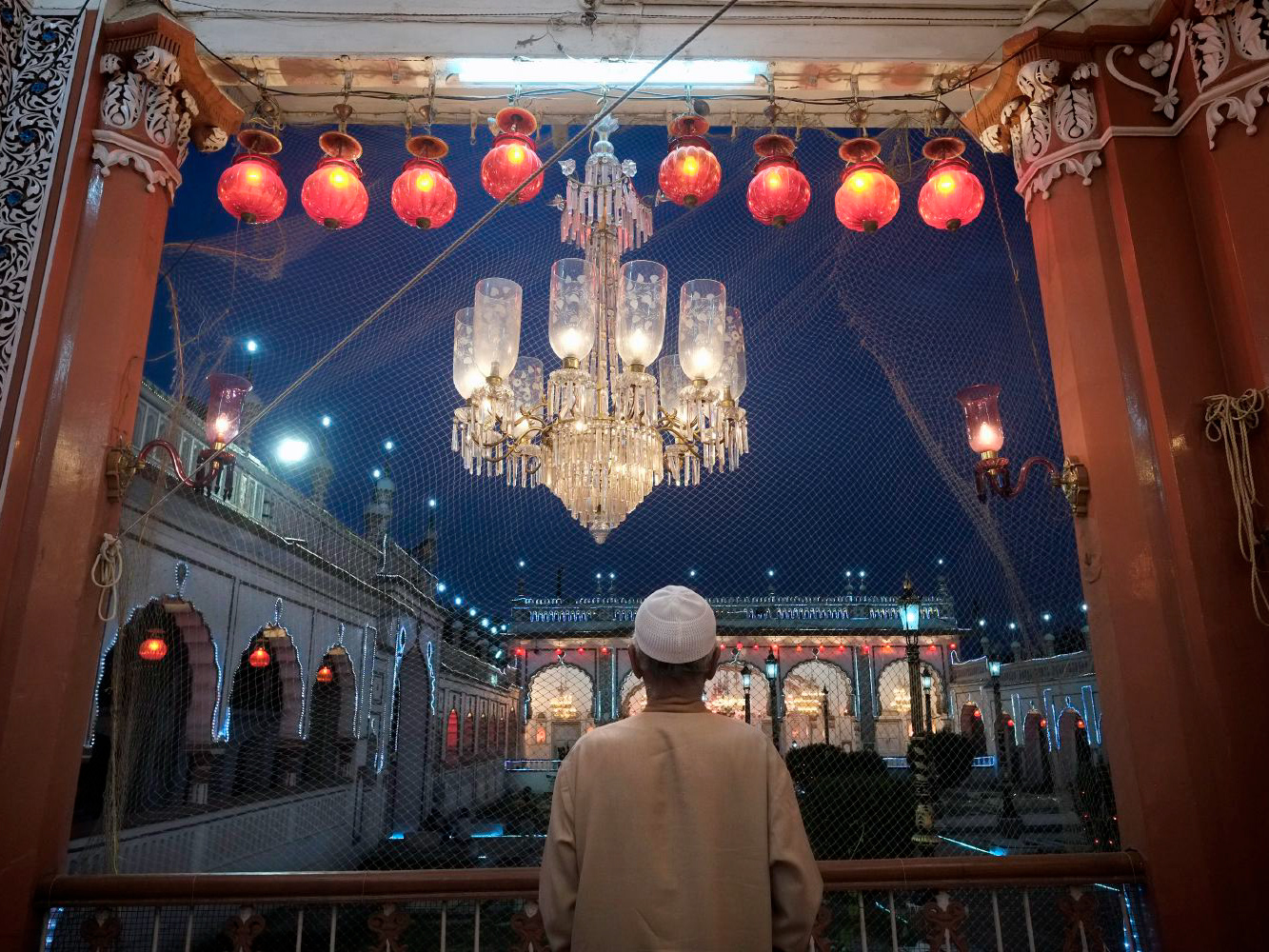
Crystal Palace
(click on the picture to see more images and then click miniatures to enlarge the photos) The Val Saint Lambert Crystal Works established in 1826 remains the crowning jewel of Belgian heritage. Master craftsmen and crystal among the clearest in the world have brought renowned international acclaim to the glassworks company from the industrial region of Liège that employed up to 5 000 workers by 1900.
For centuries, goods primarily moved from East to West along the Silk and Spice routes. By the 19th century, Maharajahs, Nizams, Nawabs, and other members of Indian aristocracy with a taste for opulence, were turning to Europe to procure the most lavish items their disposable incomes could buy.
Belgium's Val Saint Lambert, eager to export its savoir-faire, answered the call with panache offering made-to-order crystal chandeliers and other objects which soon adorned palaces, homes, mosques, synagogues and shrines throughout India.
This is the exclusive, untold story of a year-long journey in search of VSL crystal across India.
Published in National Geographic Holland/Belgium edition.

Living for Death
(click on the picture to see more images and then click miniatures to enlarge the photos) In Toraja, Indonesia, the rituals associated with death are complex and expensive. Therefore, when a person dies, it can take weeks, months even years for the family to organize the funeral.
In the region of Pangala, the Ma' Nene, or cleaning of the corpses, ceremony takes place after the rice harvest. Coffins are removed from their burial sites and opened. The mummies are cleaned, dried in the sun and given a change of clothes. Expressions of sadness are mixed with the overall happy atmosphere surrounding these moments of bonding with loved ones and honoring ancestors. The series has won Finalist in Siena, 1st place and Photographer of The Year at TPOTY, 1st Place at Felix Schoeller,
1st Place IPA,
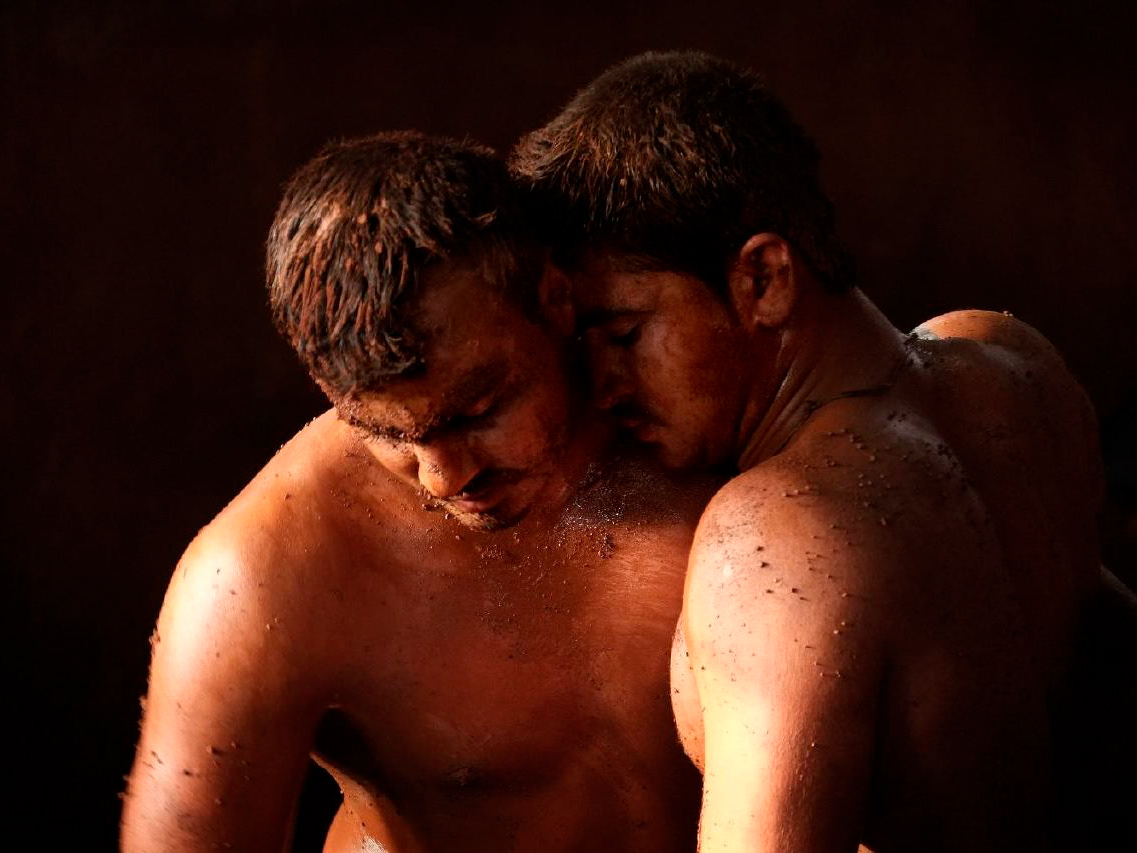
Kushti
(click on the picture to see more images and then click miniatures to enlarge the photos) Kushti is the traditional form of Indian wrestling. Practiced in an Akhara, the wrestlers, under the supervision of a guru, dedicate their bodies and minds to Kushti on average for 6 to 36 months. It is a way of life and a spartan existence that requires rigorous discipline. Experienced wrestlers set the example and transmit their skills in the pit and in the community to the younger boys (7-8 years old) and new recruits, whereby promoting camaraderie, solidarity and fraternity.
Published in National Geographic Traveler France. The series has won 1st place and Photographer of The Year at TPOTY, 1st Place and exhibition at Institut du Monde Arabe, Paris
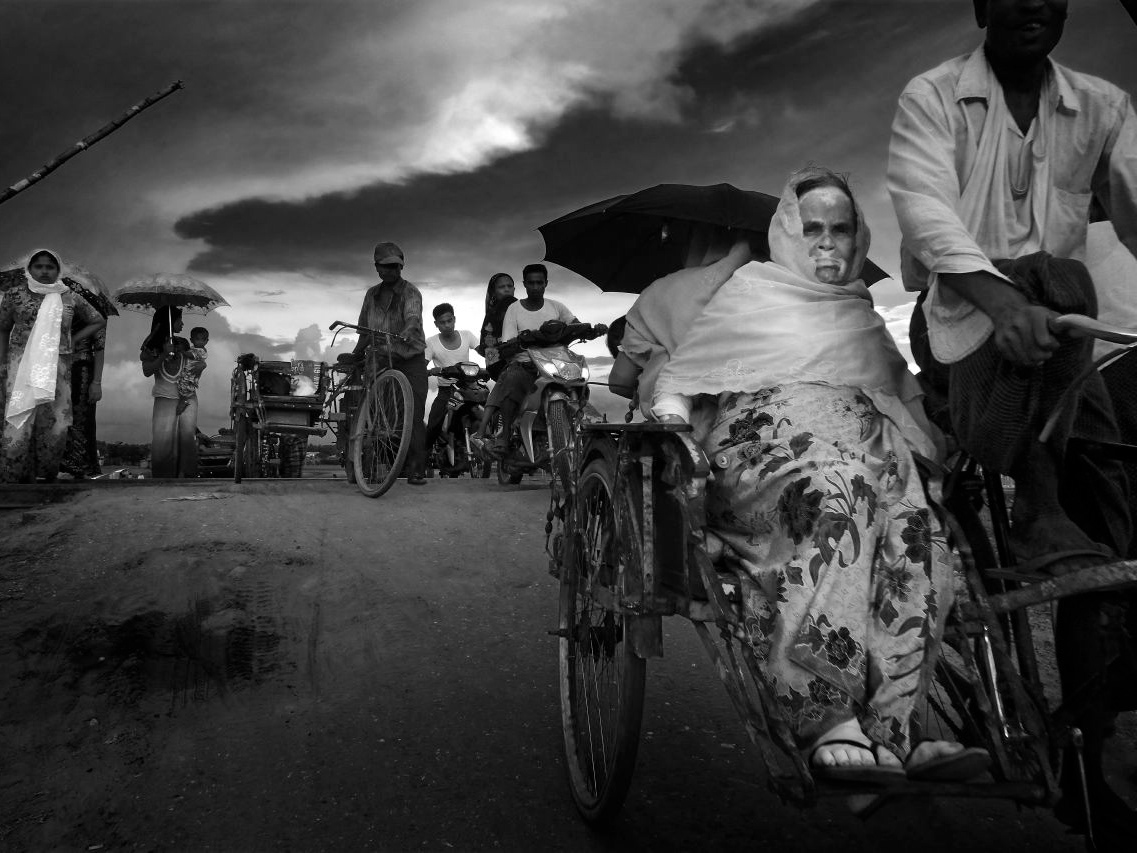
Who will save the Rohingyas?
(click on the picture to see more images and then click miniatures to enlarge the photos) The Rohingya Muslim minority of Myanmar, who are subjected to discrimination and human rights violations and have been stripped of all rights including citizenship, are now living in IDP or internally displaced person camps. In June 2012, a cortege led by radical Buddhist monks, civilians and police slaughtered people, burned down homes and mosques and displaced 140,000 Rohingyas forcing them into camps on the outskirts of the city. Now more than 600,000 have fled to Bangladesh. While the country's historic turn towards democracy should be encouraging, the plight of the Rohingya people is far from over and on the ground the prospects for this traumatized minority look rather grim.

Dreamland
(click on the picture to see more images and then click miniatures to enlarge the photos) India. Dreamland.
India, people sleeping, day and night, alone or in groups, are an integral part of the Indian landscape, in what we would consider rather unusual places, they find it perfectly normal to curl up in the middle of an intersection, on a stone by a temple, or on a cart.
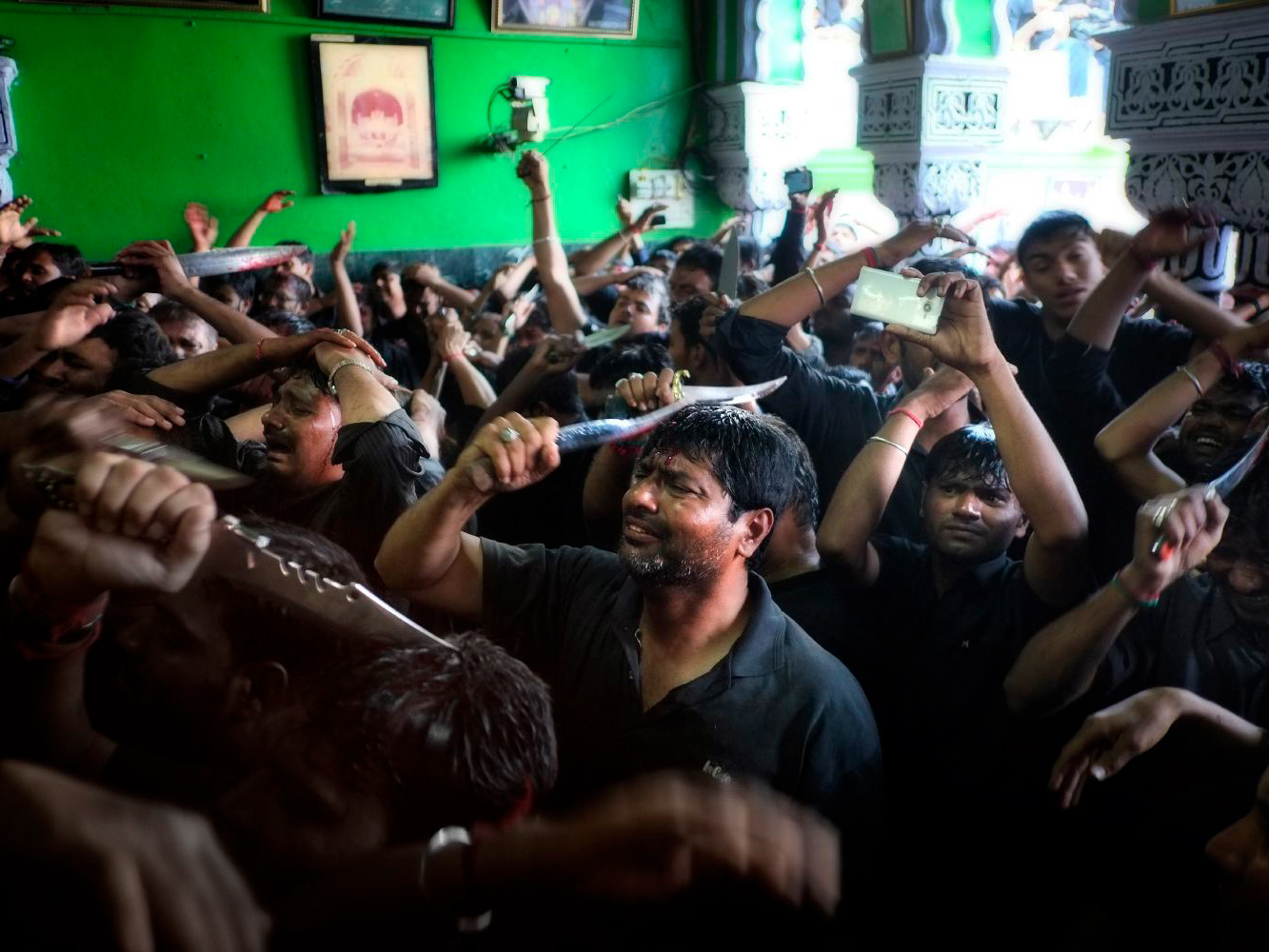
Moharram
(click on the picture to see more images and then click miniatures to enlarge the photos) India, Hyderabad. The Day of Ashura is on the 10th day of Muharram in the Islamic calendar and marks, for Shia Muslims, the climax of the remembrance of the martyrdom of Husayn ibn Ali, the grandson of Muhammad at the Battle of Karbala (now in Iraq) on 10 th of Muharram in the year 680 CE or AD.
The massacre of Husayn with a small group of his companions and family members has ever been remembered with sorrow and passion by Shia Muslims.
The Sheikh of the mosque retells the story of the Battle of Karbala to allow the listeners to relive the pain and sorrow endured by Husayn and his family.
Participants congregate in public processions for ceremonial chest beating.
Certain traditional flagellation rituals use a sword. Other rituals involve the use of a chain with blades.
These religious customs show solidarity with Husayn and his family. Through them, people mourn Husayn's death and regret the fact that they were not present at the battle to fight and save Husayn and his family.
Some Shias also believe that taking part in Ashura washes away their sins.
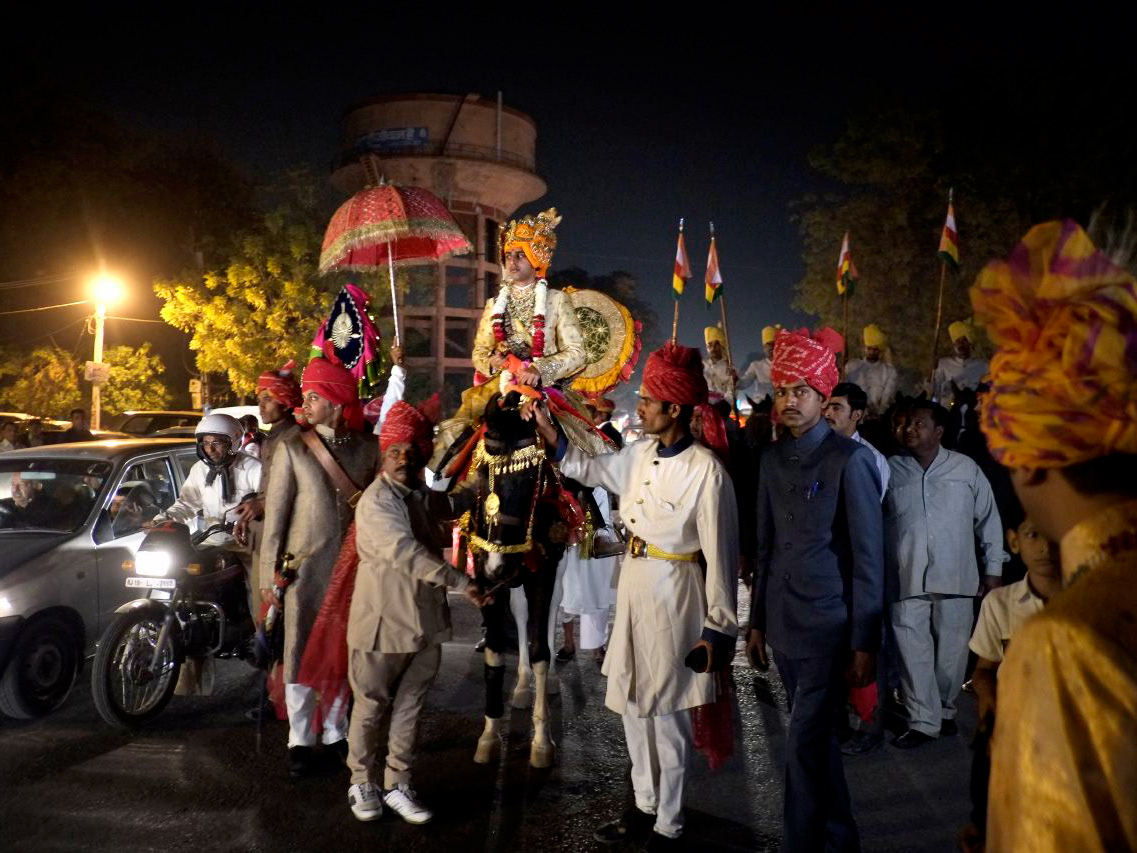
Royal Wedding
(click on the picture to see more images and then click miniatures to enlarge the photos) India. In Jodhpur, Rajasthan, for 3 days the ceremonies of the royal wedding between Param Vijay and Kumari Kamakshi are followed by hundreds of guests of Indian nobility and aristocracy under the patronage of His Highness Maharaja Gaj Singh II of Mawar-Jodhpur. Punctuated by sumptuous banquets at lunch and dinner, the crescendo is the Nikasi, ceremony whereby the groom, accompanied by the Baraat, a male-only procession led by drummers and musicians, crosses the city on horseback (elephant in the past) to the wedding venue where his bride awaits.
The nuptials begin at midnight and at the precise predetermined, auspicious time, a Brahmin priest presides over a series of rituals to consummate the marriage.
Finally, on the third day, the bride removes her veil and the couple receive their guests.
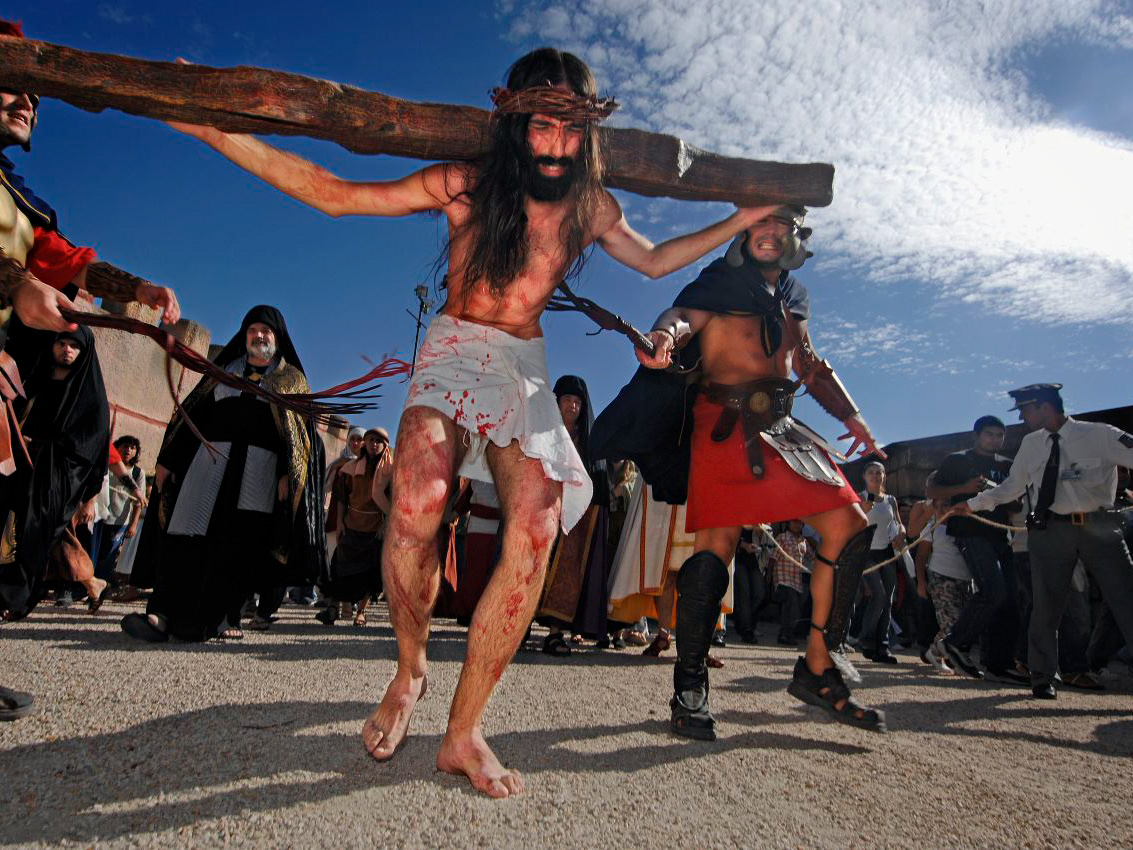
Tierra Santa
(click on the picture to see more images and then click miniatures to enlarge the photos) Tierra Santa theme park in Buenos Aires, Argentina. During the Holy Week of Easter, reenactment of the life and death of Jesus-Christ, the path of the cross
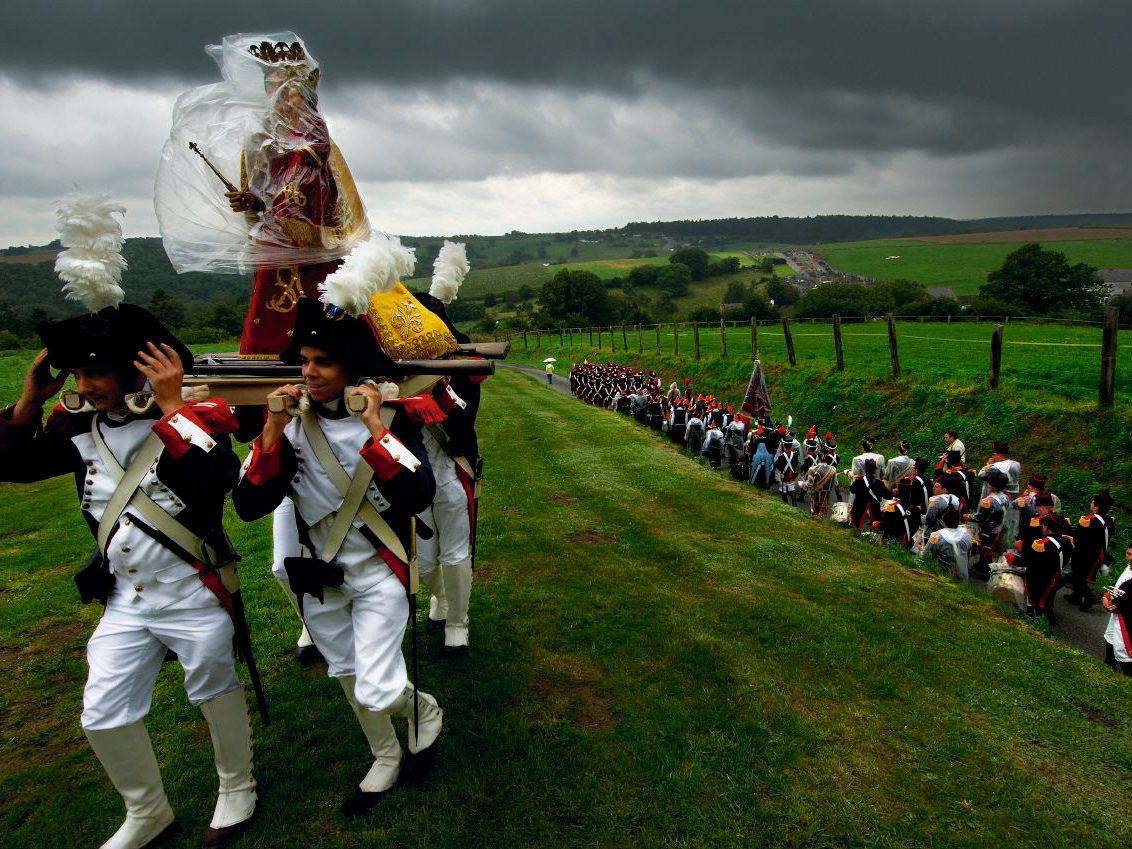
Marches
(click on the picture to see more images and then click miniatures to enlarge the photos) L’Entre-Sambre-et-Meuse in Belgium is an historical region that lies in between the Sambre and the Meuse rivers. Separating Germany and France, two fiercely combative nations, the area endured incessant, often devastating passages for centuries.
Over time, the locals acquired a taste for the sumptuous uniforms and the pomp and circumstance surrounding the processions that traversed the villages and countryside carrying the relics of saints preserved with great devotion. These processions have existed in the region of l’Entre-Sambre-et-Meuse for centuries.
Today’s processions and marches are the continuation of ancestral practices. They owe their enduring popularity not only to faith and historic imitation, but also to the magnificent landscapes of this isolated region where customs and traditions have remained unchanged for centuries.
Published in a book : "Procession de Foi", Editions Reporters.
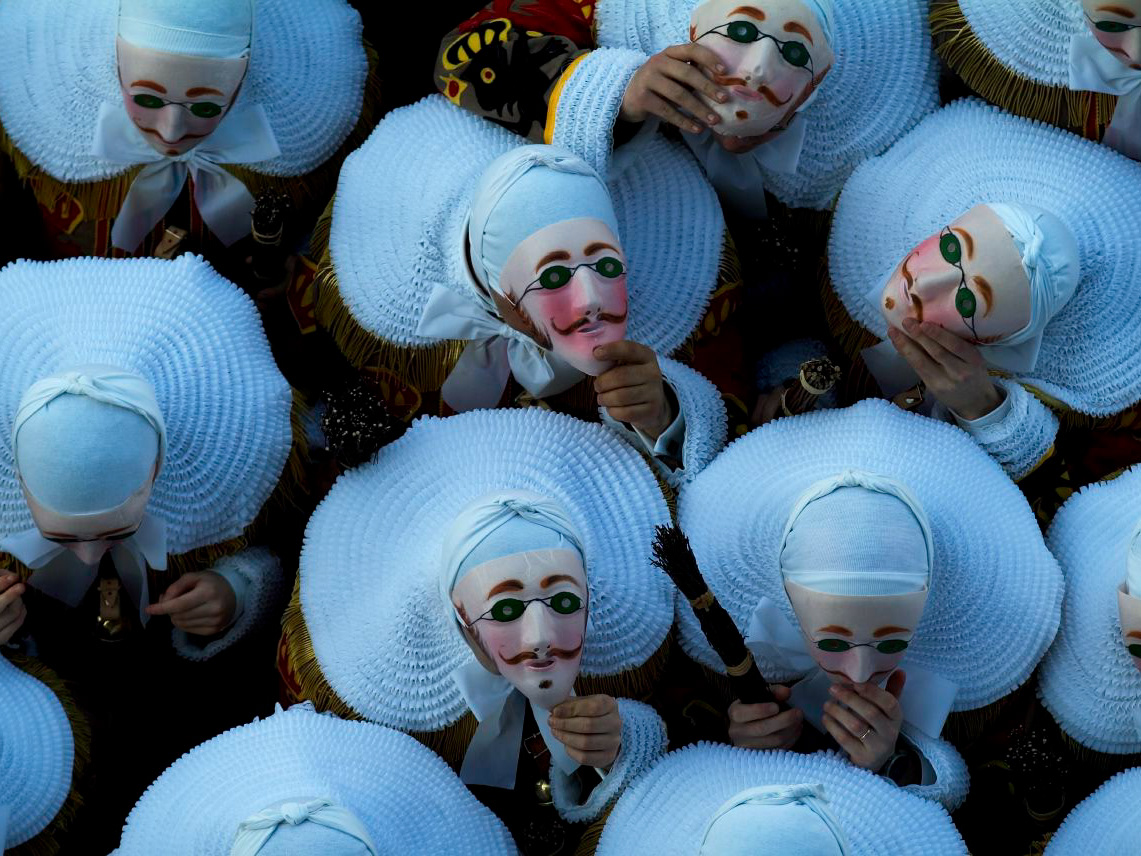
Gilles
(click on the picture to see more images and then click miniatures to enlarge the photos) Belgium, Walloon Region, Hainaut province, the town of Binche, the Carnival of Binche whose first written records date back to 1394 is recognized as a masterpiece of Oral and Intangible Cultural Heritage of Humanity by UNESCO since 2003.
The Carnival of Binche culminates on Mardi Gras, the Tuesday before Ash Wednesday, with the only official, codified outing of the some 1000 Gilles of Binche from thirteen companies following a strict code of dress and tradition..
Published in a book : "Le carnaval de Binche vu par 20 photographes", Editions Reporters.
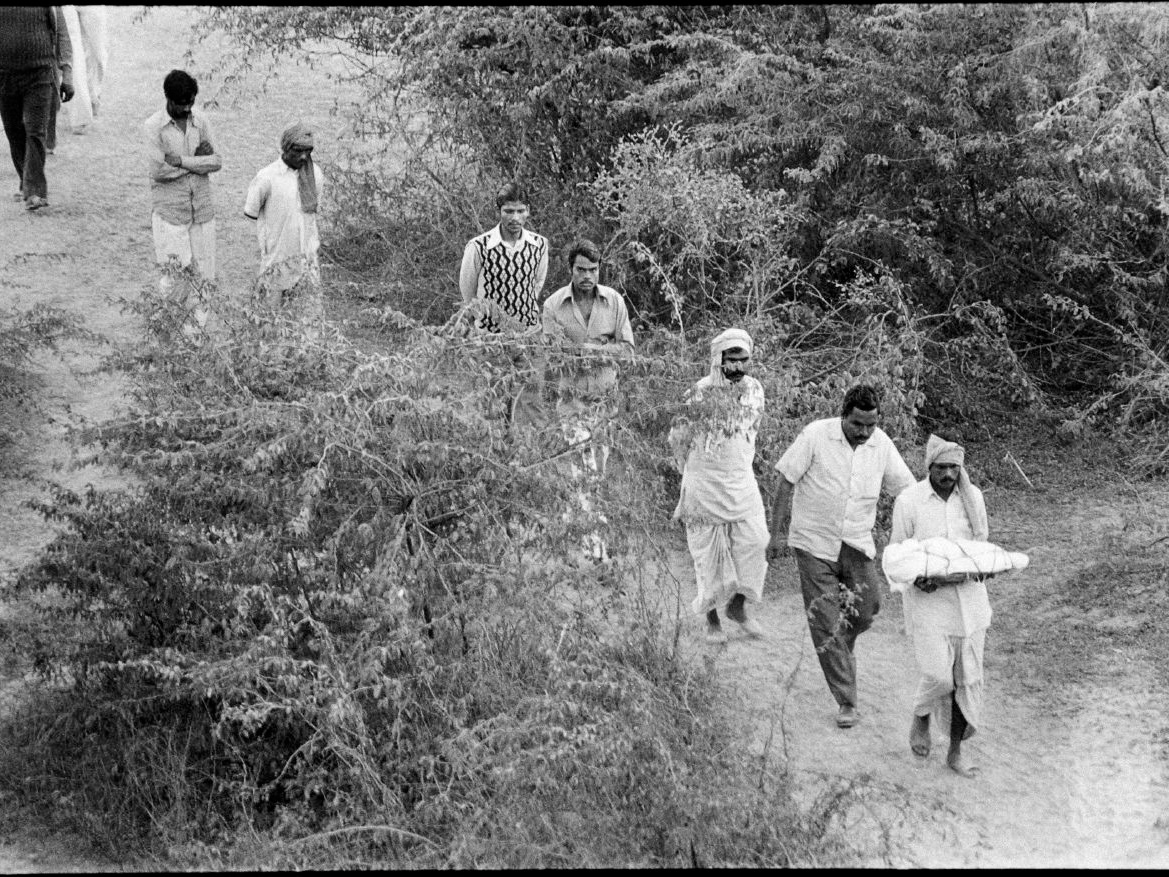
Ganges
(click on the picture to see more images and then click miniatures to enlarge the photos) India, Agra, on the Ganges River only a few meters away from the Taj Mahal, one of the most visited monument by foreign tourists, a baby, recently deceased, is thrown into the Ganges by family members.
While traditional Hindu funerary rituals call for cremation, babies, children, deaths from serpent bites and ascetics are often buried.
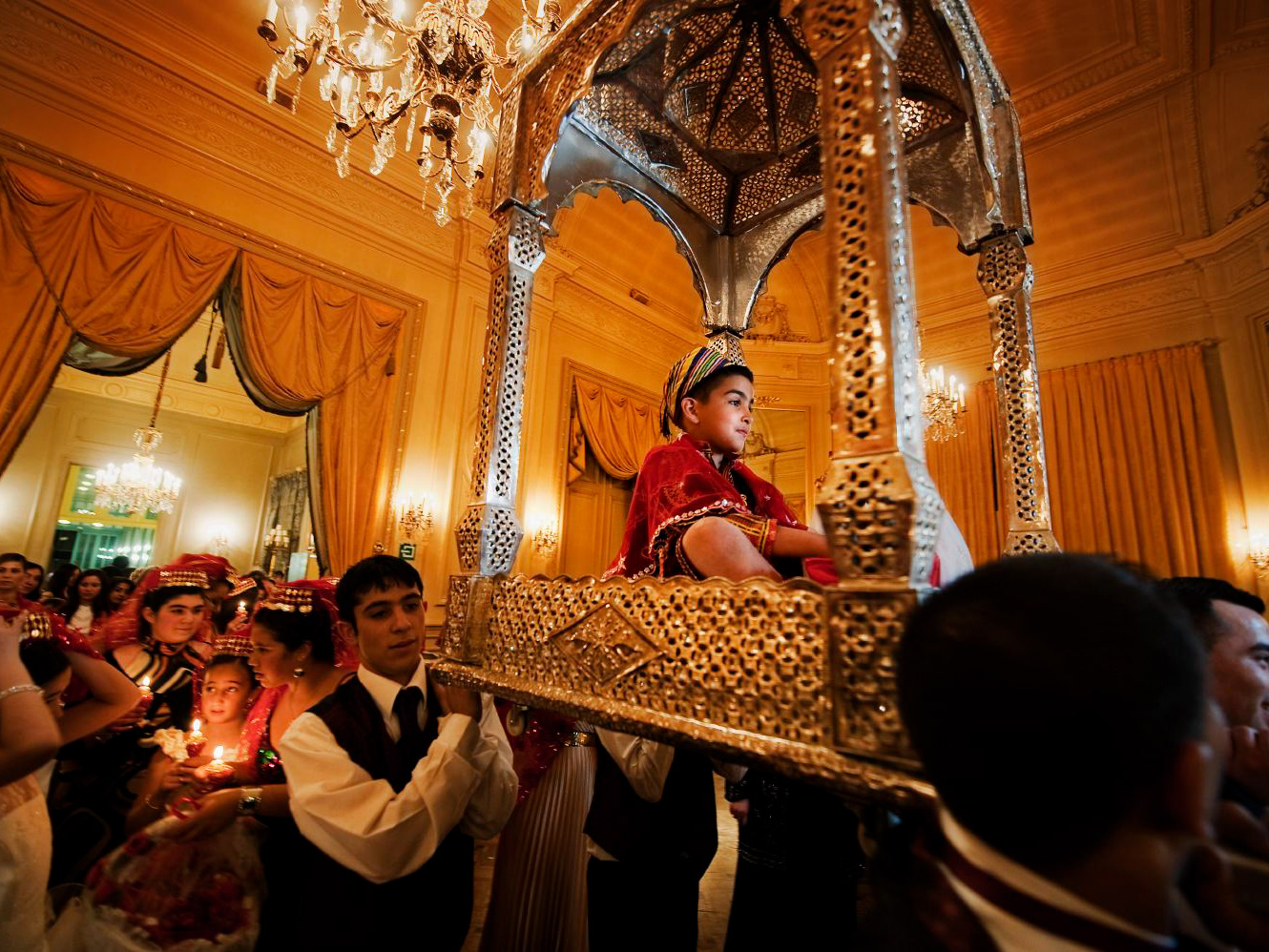
Brussels
(click on the picture to see more images and then click miniatures to enlarge the photos) Brussels the capital of Europe, is a melting pot of languages and cultures with a constant flow of immigration. Today 30% of the population of Brussels is foreign. This largely mixed character that shapes Brussels identity makes it a unique place open to the world and help people embrace this mosaic of cultures, traditions, languages and beliefs that characterize Europe today..
Published in National Geographic Holland/Belgium edition.